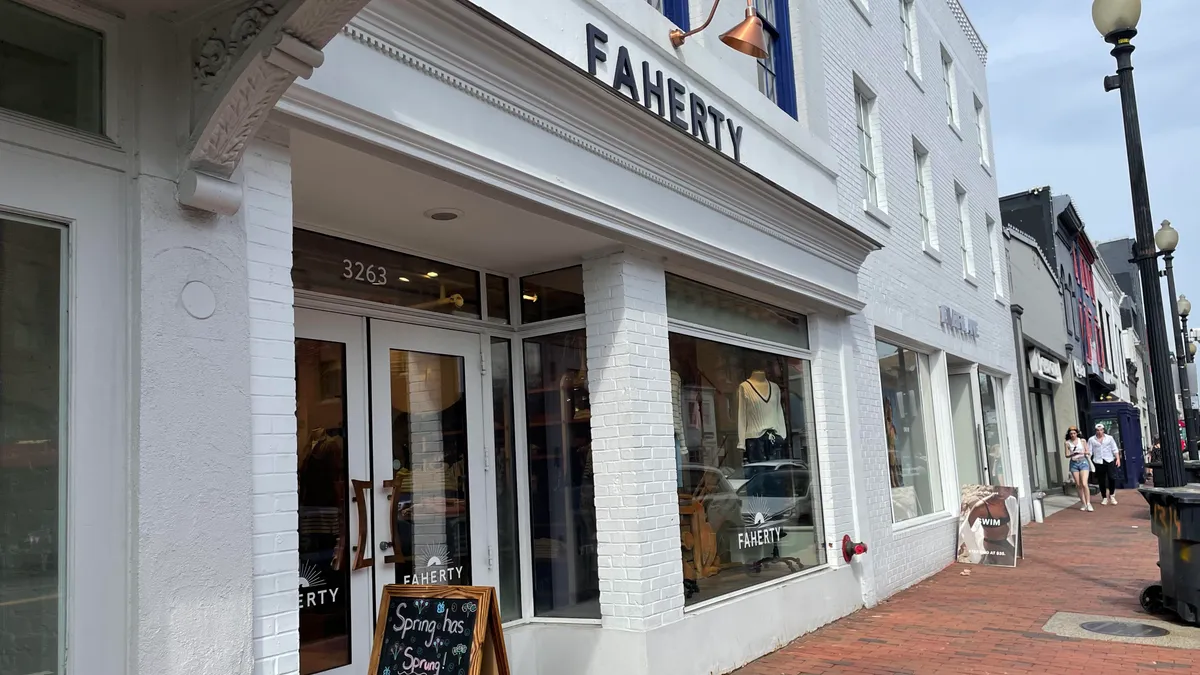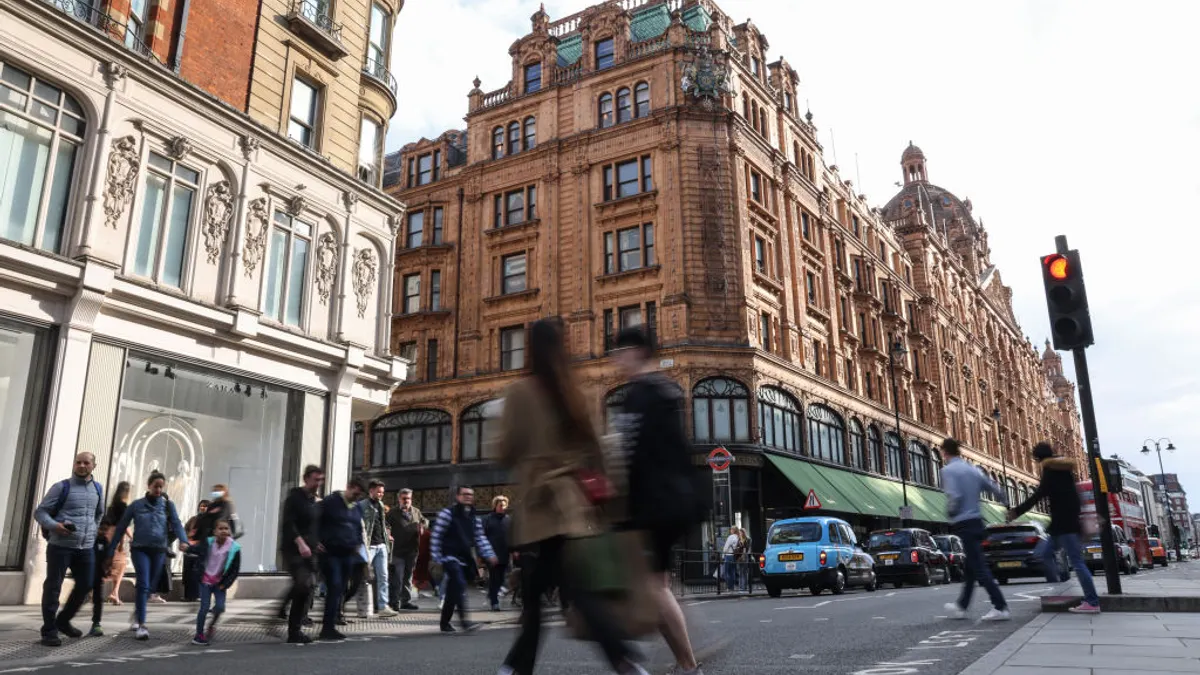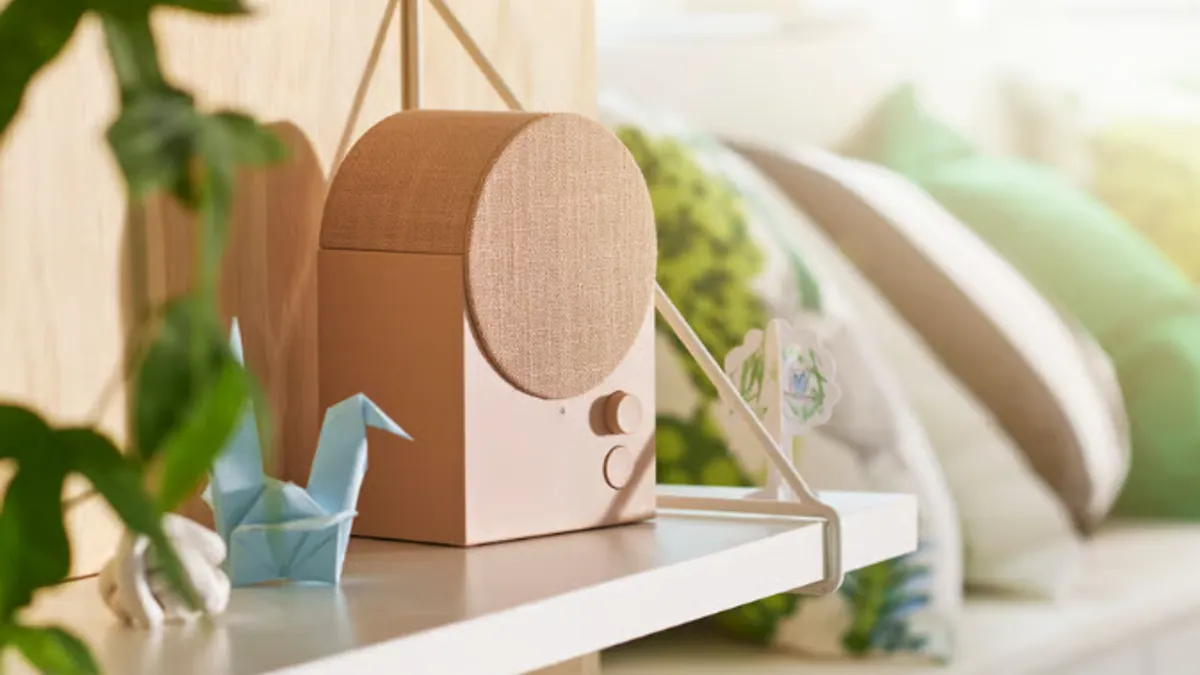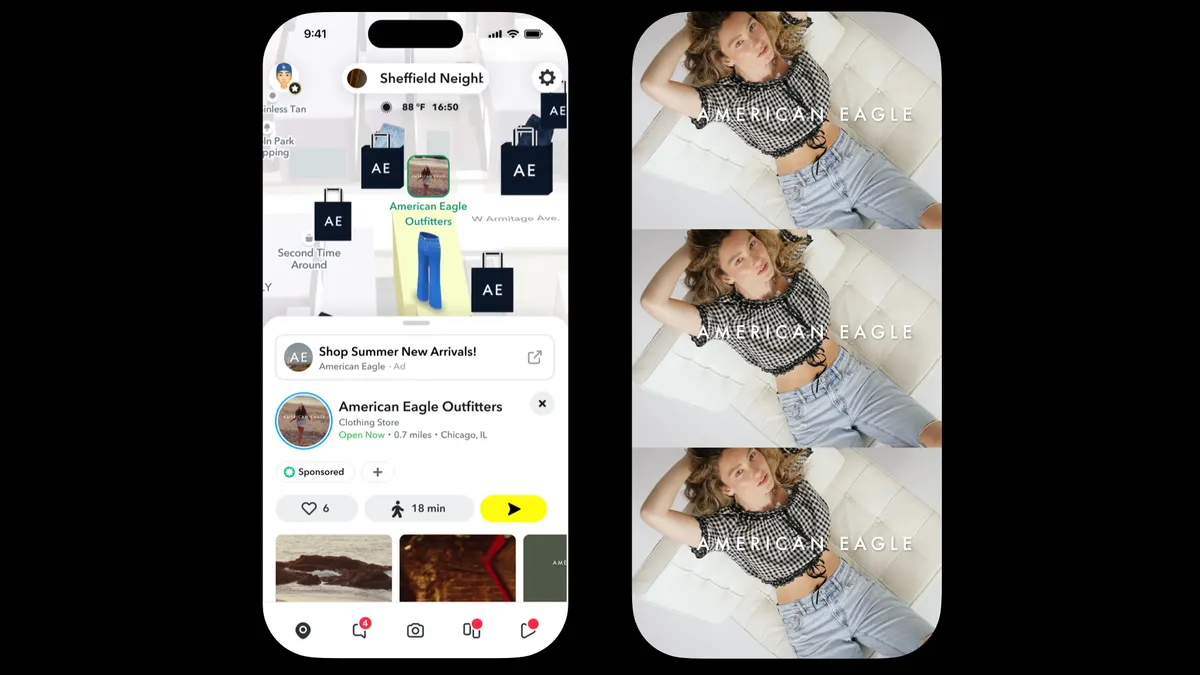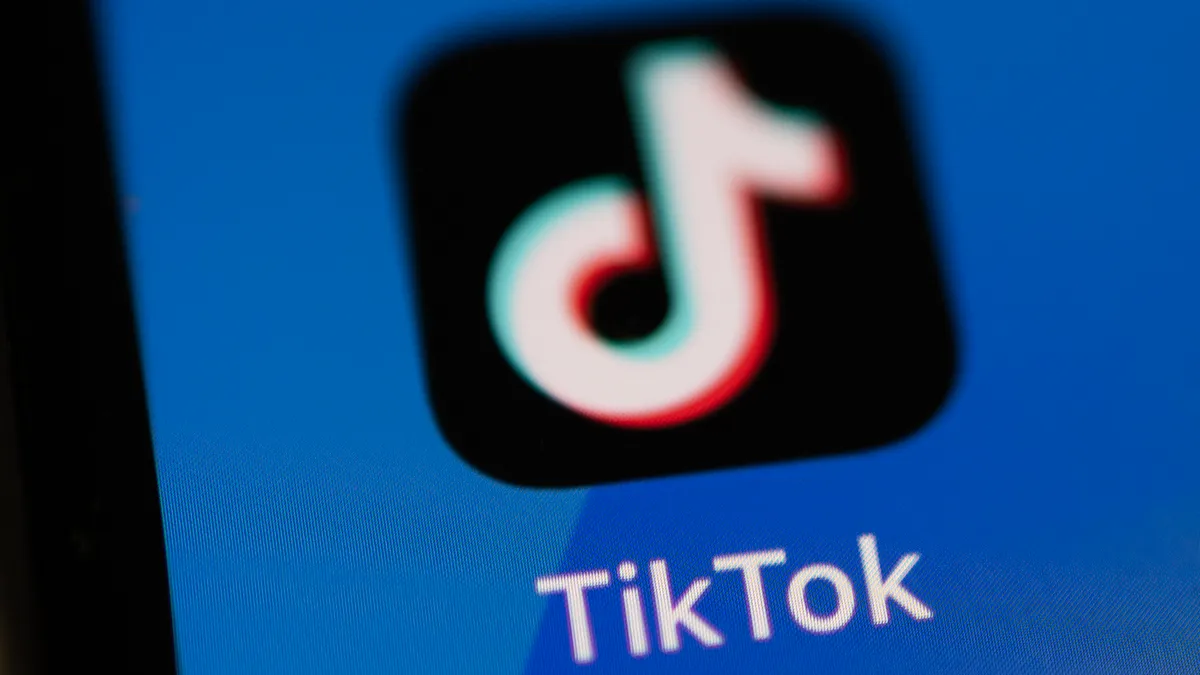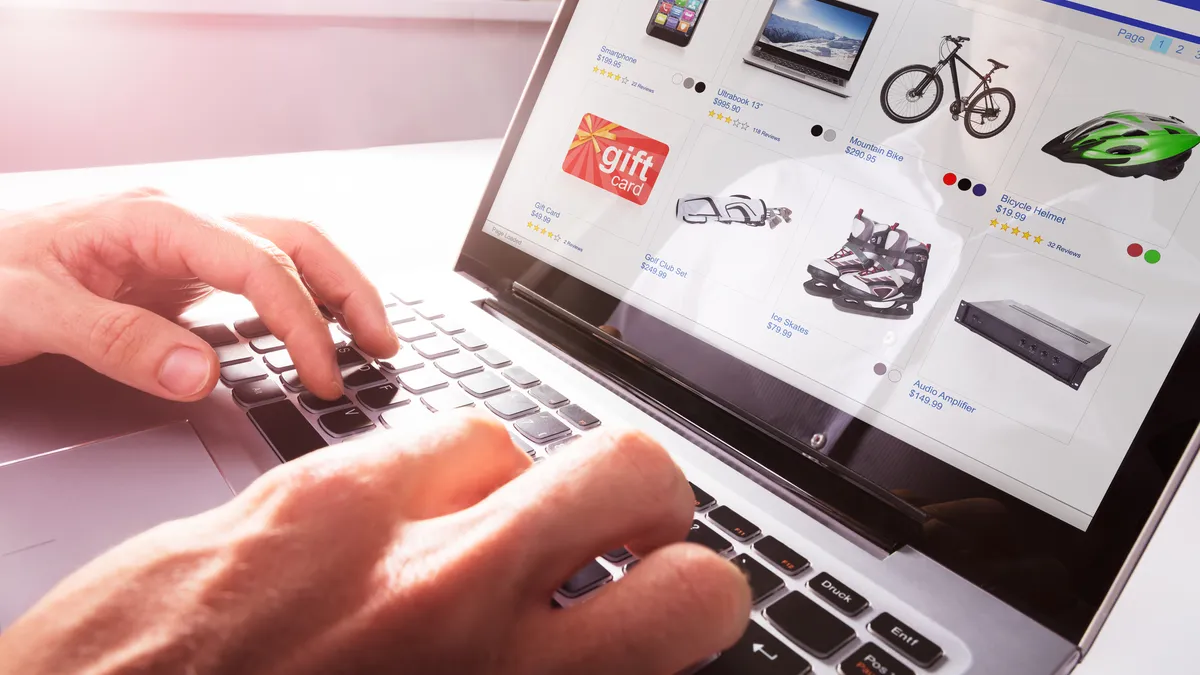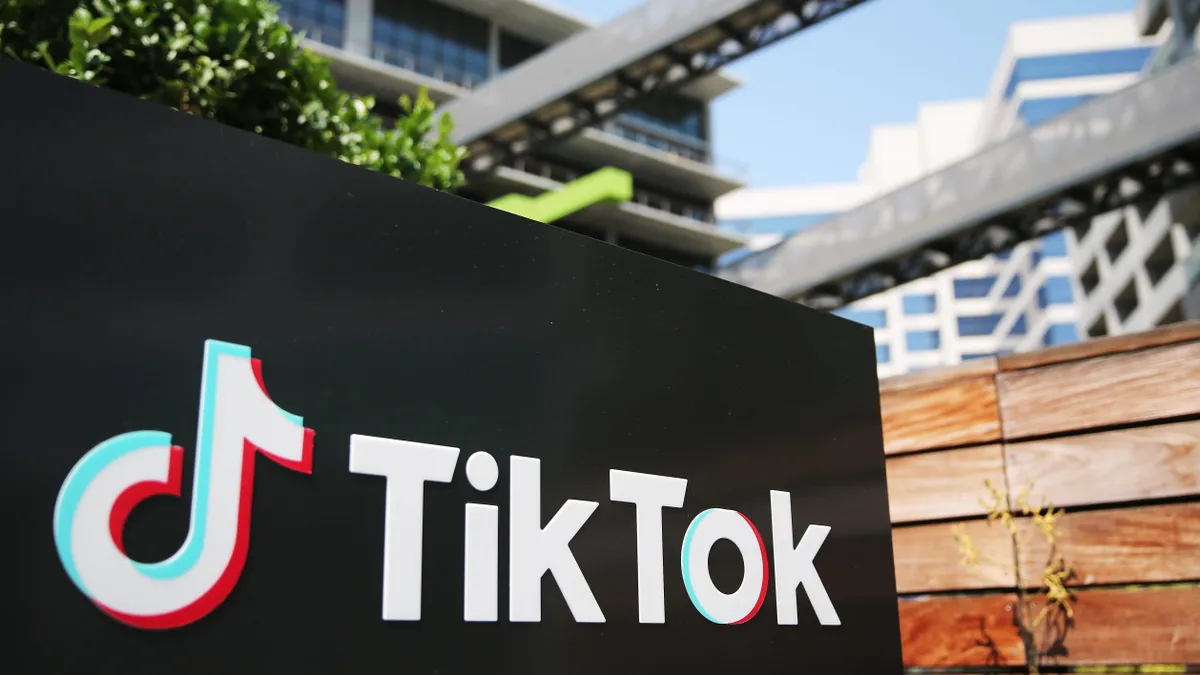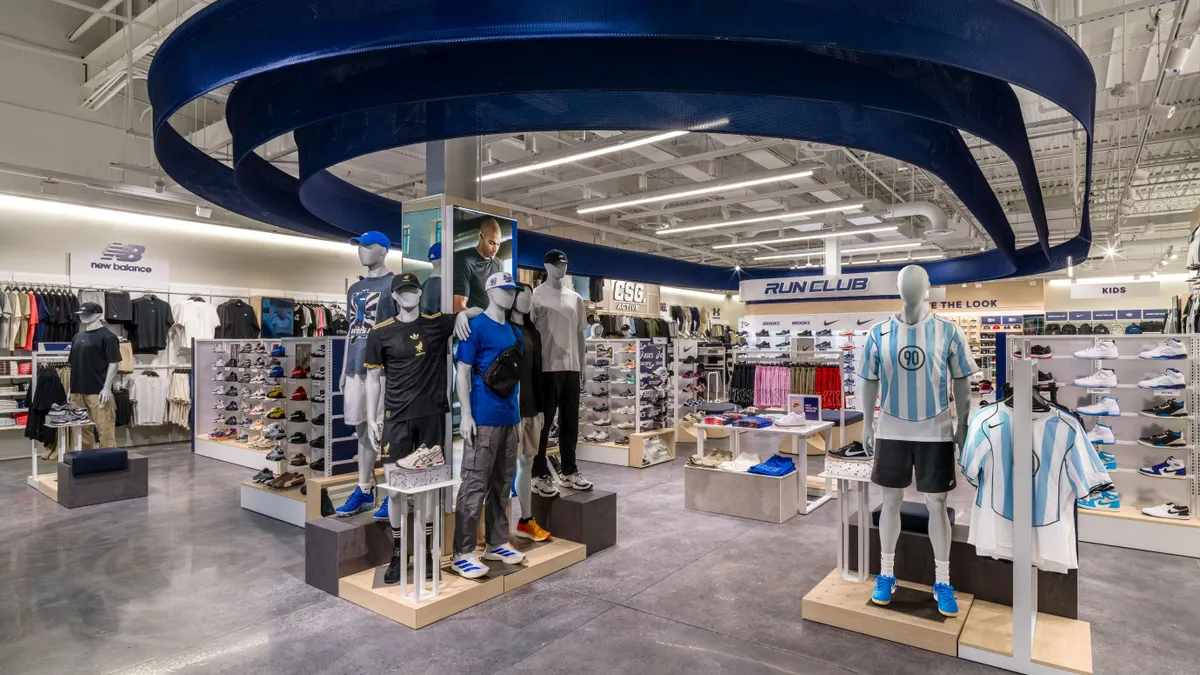2021 was a big year for venture capital.
Global venture-based funding rose 111% year over year to about $621 billion, according to data from CB Insights’ 2021 State of Venture report. The U.S. was the leading region for total funding dollars that year, and the unicorn valuation count rose globally by 69%.
But in 2022, that picture changed.
Global funding this past year was down 35% to $415.1 billion, per CB Insights’ 2022 report. In the U.S., there was a 37% drop year over year, but it was a 31% increase from 2020. While deal volume fell by just 4% globally, there was a 31% drop in IPOs. More specifically, retail technology funding globally declined by 52% in 2022.
And for retail overall, VC deal activity dropped in the U.S. by about 36%, with the two largest 2022 deals by size being late-stage fundraises, according to data from PitchBook shared with Retail Dive.
While venture capital for female-founded brands in the U.S. has trended upwards in recent years, the reality is that the amount of capital invested in startups solely founded by women dropped year over year in 2022, from 2.4% to 2%, according to PitchBook. Meanwhile, the amount invested in brands with male and female co-founders increased from 15% to 16.5%.
Despite being just over a month into 2023, the retail world has already seen a handful of bankruptcies and layoff announcements, making for a bleak outlook as the year ramps up. Some brands are noting increased expectations from prospective investors, and venture capitalists may be getting more conservative with their money as they watch the market.
But is the state of venture funding really a new issue, or are investor behaviors returning to a form of normalcy? And what types of companies are snagging some of the limited funds available?
‘There's a lot of pain’
It seems like the word profitability has never been more important for brands dependent on funding right now.
When Everlane’s CEO Andrea O’Donnell informed employees in January that nearly 9% of the company would be laid off, she left a sobering note about the state of the business in the current market.
“It’s no secret that these are difficult times for venture-backed companies. The expectation to be profitable shifted overnight,” O’Donnell wrote in an internal memo reviewed by Retail Dive. “Today’s tough decision is intended to set us up to improve profitability in 2023.”
And O’Donnell isn’t the only brand executive noticing the pressure.
Ariane Goldman, founder of maternity brand Hatch, gained operational control of several competitors last month after Marquee Brands made a minority investment in the brand. The move marked a unique deal during a time when some companies are struggling to raise any funds at all.
In an interview with Retail Dive at the time, Goldman noted that the fundraising market was already quite different than when she had entered it.
“We entered at the height when perception was valued on growth and brand equity, and then it very quickly turned into profitability and a lot less people are interested in making any investments, regardless of category or brand,” Goldman said.
But how is this viewed from the perspective of a venture capitalist?
“It's not necessarily these founders' fault that they've been hearing one story from VCs about grow, grow, grow, and seemingly overnight, that story changed to the bottom line, bottom line, bottom line.”

Andrea Hippeau
Partner at Lerer Hippeau
VC firm Lerer Hippeau was one of the top 10 U.S. investors in retail by deal count in 2022, according to PitchBook. The portfolio of brands it works with includes a slew of traditionally direct-to-consumer up-and-comers, including Cuup, Topicals, Parade, Otherland, Prose and more.
When asked about the larger emphasis on profitability, partner Andrea Hippeau told Retail Dive that it is especially pertinent for DTC brands right now.
“The long story short is that the music has stopped in terms of endless amounts of VC money going into to all sorts of companies,” Hippeau said. “The idea of raising not as much money, getting to profitability and kind of controlling your own destiny is definitely what we're telling our companies at this point.”
The infamous growth-at-all-costs mindset that startups are often known for is changing, according to Hippeau, who said this challenging state will likely continue for another 12 to 24 months.
“There's a lot of pain that has to be kind of dealt with at the moment,” Hippeau said. “It's not necessarily these founders' fault that they've been hearing one story from VCs about grow, grow, grow, and seemingly overnight, that story changed to the bottom line, bottom line, bottom line.”
Show me the money
Despite the staggering statistics and gloomy economic outlook, plenty of retail companies are still announcing the completion of funding rounds.
Over the past few months, brands such as Makeup by Mario, Thirteen Lune and InnBeauty Project have all announced the completion of multimillion-dollar funding rounds.
And some retailers are even entering the venture capital world as investors themselves. In May, Home Depot launched a $150 million venture capital fund. Ulta Beauty also announced the creation of its digital innovation venture fund in August, and Dick’s Sporting Goods started its own fund in November for sports startups.
So why are some brands closing deals while others aren’t? Current economic pressures may just be bringing companies with more potential to the top, according to Hippeau.
“I think companies that are built out of this market and this environment are going to have better fundamentals from day one,” she said. “And I think that they're going to be built as more sustainable long-term businesses with more financial fitness and rigor.”
But for Hippeau, it’s no longer just about having a cool brand image. Innovation in products and strong retail distribution are key to staying competitive in fundraising right now.
“You see brands of ours, like Topicals with Sephora, actually putting DTC to the side and really entering the market through these deeply ingrained retail partnerships,” Hippeau added.
Although retail technology funding dropped year over year in 2022, the number of deals was still higher than 2020 and 2019, per CB Insights. Despite lower dollar investments, innovation is still at the forefront of some retailers' minds.
And the fact that two out of three retail tech deals last year were considered early-stage may be one of the more interesting takeaways, according to CB Insights Principal Analyst Laura Kennedy.
“Maybe the investors aren't putting quite all of their eggs in one basket,” Kennedy told Retail Dive. “And now there's kind of a return to looking at some of the more innovative, early-stage solutions.”
There’s been increasing interest in retail innovation occurring within countries such as India, Indonesia and Nigeria, according to Kennedy. Amazon’s AWS in November announced it was opening its second infrastructure region in India in an effort to drive innovation within the country. And Walmart is preparing to invest an additional $2.1 billion in India’s e-commerce and payments capabilities, according to reporting from TechCrunch. This includes a potential $200 million to $300 million investment in PhonePe, as well as a $1.5 billion deal to purchase another firm's shares of Flipkart (Walmart owns a majority share of the company).
“We're seeing a lot of activity from and funding towards companies helping retailers and merchants that traditionally are operating in sort of informal ways,” Kennedy said. “They're recording their businesses on paper, they're the stalls in markets and they're not digitized. A lot of these tech companies are just very simply helping them digitize their operations.”
A focus on technology in retail is more than just a pandemic-era phase for the industry and is something that will likely remain as funding normalizes, according to Kennedy.
“The willingness to spend on technology and test it feels like it has stuck around, even as funding has declined,” Kennedy said. “[Funding] through the middle of last year was the aberration. So maybe we're returning to some kind of more steady state. That would be the glass-half-full way of looking at it.”



